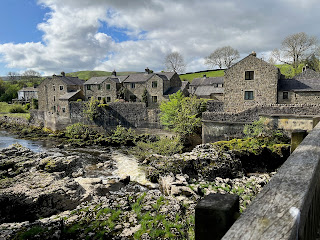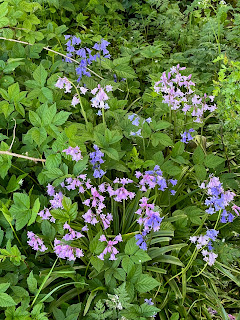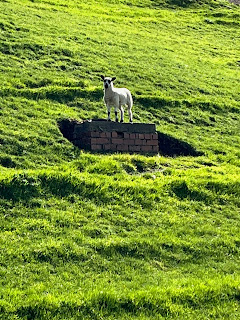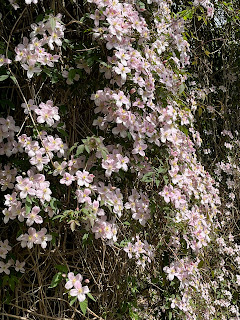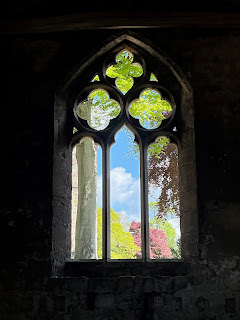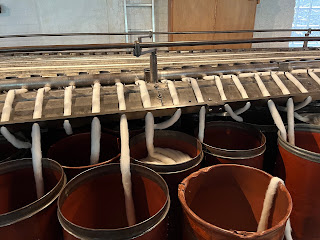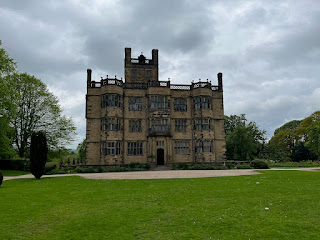As I mentioned yesterday, we are staying in Grassington, well known as the fictional Darrowby in the series All Creatures Great and Small. I spotted this photo today while taking a short walk in the village.
Monday, May 15, 2023
Savoring the Beauty of Yorkshire
In the Yorkshire Dales in the Herriot Suite
This evening finds us in the fictional town of Darrowby
nestled in our comfy room: The Herriot Suite.
If you are at all familiar with the Masterpiece Theater Series, "All Creatures Great and Small", then the name and place should certainly ring a bell.
The real name of this town is Grassington, and it is a quaint village in the lower edge of the Yorkshire Dales. Our B&B is on the top floor of the fictional Drover's Inn featured in the series,
We began our day at Quarrybank, a National Trust site that is far different from what we've visited so far on this trip. The site is a cotton mill, located in a gorge, that uses the local river source to power a water wheel that, in turn, was used to operate the mill. And at the time, it was the largest such mill in the country.
Included on the site is a small kitchen garden,
as well as a beautiful walking garden along one of the banks of the river.
He built a home for his wife and family right next to the mill so he was on site, and his wife was happy to be living in the country rather than in the dirt and grime of the city.
The interior of the house was charming and included portraits of the couple in their older years.
Samuel, being an Irishman, was a bit of a rebel of the day, and he chose to hang a portrait of George Washington over his fireplace.
That would certainly have caused a bit of a ruckus in the early 1800's!
What I particularly loved about the house is how, once again, the trust has presented information in a unique way that captures the viewer's attention. Instead of plates telling a bit of the story, this time it was the napkins.
Now, just how clever is that?
Samuel knew that in order to have a successful business that he needed to have happy and health workers, so he built garden houses for them, setting them in a small village, complete with a shop, near the factory. The village still exists to this day.
We learned that this mill, like others at the time, had 40% of its workhouse as children, ages 9 to 21. They were either orphaned or paupered, and they were brought to Quarrybank from other workhouses, mostly in the large cities.
But there was a huge difference in the living conditions for these children at Quarrybank in comparison with where they had come. 90 children were housed in the Apprentice House.
We were told stories of particular boys and girls who had been brought to the mill to work from other workhouses: their names, where they came from, as well as particular details that had all been found in the records uncovered in the archives.
Once again, a simple prop brought a glimpse into the life of these children so many years ago.
From here we headed north of Manchester to another trust site, the Elizabethan Mansion, Gawthorpe hall.
It was originally a pele tower, built by the Shutleworth family in the 14th century to defend against innovation by the Scots. The house was then expanded around this tower, being completed during the early Elizabethan era.
What is truly amazing about this house is that it still has the original floors, ceilings and wall panelling from the 1600's when it was completed.






